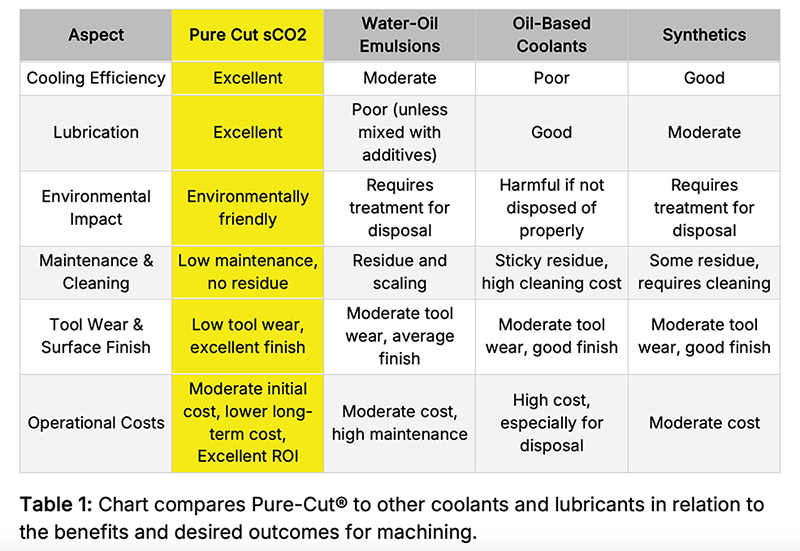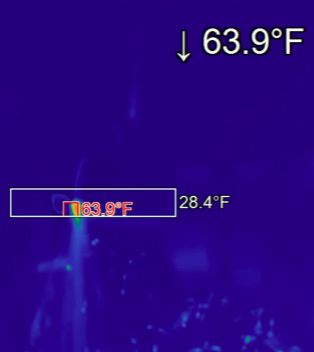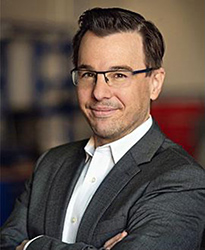scCO₂ cooling technology offers manufacturers a way to boost output, cut costs and stay competitive without major new capital investment.
As reshoring gains momentum and manufacturers face pressure to do more with less, the limitations of conventional CNC machining are becoming harder to ignore. Economic uncertainty, tariff instability, and tightening emissions regulations are challenging companies across aerospace, defense, medical device, and automotive sectors to modernize operations—often without the budget for new equipment or large-scale infrastructure changes.
At the center of this opportunity is a game-changing innovation: supercritical carbon dioxide (scCO₂), a clean and ultra-efficient alternative to traditional coolants. By retrofitting existing CNC machines with scCO₂-based delivery systems, manufacturers can dramatically improve tool life, surface finish, and cycle time—unlocking global competitiveness using the equipment they already own.
This shift isn’t just about performance—it’s about giving American manufacturers a strategic advantage. With scCO₂, facilities can increase output, reduce downtime, and lower total machining costs—all while supporting environmental goals and improving workforce safety. It’s a future-ready solution that helps bring precision manufacturing back home.
Traditional coolants like petroleum-based emulsions and cutting oils have been standard in machining for decades, but they come with a long list of limitations—fluid disposal costs, worker health hazards, inconsistent cooling, and downstream cleaning requirements, to name a few.
Supercritical CO₂, by contrast, behaves like a gas and a liquid simultaneously when pressurized and heated above its critical point (approximately 31°C and 1,070 psi). In this state, CO₂ becomes an ideal medium for delivering extreme cooling power and lubrication directly to the cutting zone—without the mess, waste, or environmental risk of traditional coolants.
This near-dry, high-performance approach provides a cleaner and more precise cutting environment and is gaining traction as manufacturers seek solutions that align with both economic and environmental goals.

Real-world implementations of scCO₂ cooling and lubrication have demonstrated measurable performance improvements across industries:
These outcomes not only streamline production but also contribute to more predictable and consistent machining results.

Few sectors benefit more from scCO₂ technology than aerospace. The industry regularly works with high-strength, heat-resistant metals that are notoriously difficult to machine. Traditional coolant systems often fall short in managing the thermal loads and precise tolerances required.
Studies have shown that when machining titanium alloys like Ti-6Al-4V, supercritical CO₂ cooling can lead to a significant increase in tool life, improved surface speeds, and tighter dimensional accuracy. These improvements translate into real-world benefits like increased production capacity, reduced waste, and more competitive bidding.
In a sector where every micron and every second counts, scCO₂ allows manufacturers to maintain quality and consistency while accelerating output and reducing cost per part.
scCO₂ technology is being validated through extensive lab trials and third-party research. One recent study titled “The tool wear and productivity impact of CO₂ and emulsion-based cooling when milling diverse titanium alloys,” conducted by Proud et al., investigates the effects of scCO₂ + MQL on tool wear and productivity during the milling of various titanium alloys. The study found that scCO₂ + MQL enabled up to 338% increase in tool life when milling Ti-6Al-4V titanium alloy compared to conventional coolants. Surface speeds increased by 35%, drastically improving titanium machining throughput without sacrificing quality.
But what do these improvements mean from a cost perspective? Let’s consider the following tooling scenario:
A 338% tool life improvement means a massive decrease in tools needed. Using the figures above, this scenario of switching from flood coolant to scCO₂ would result in $19,250 in monthly savings just on tooling. Layer that with the improvement in surface speeds, and the entire operation is transformed by this simple switch.
This advancement holds significant implications for aerospace applications, where machining tight-tolerance parts from heat-resistant alloys is the norm. scCO₂ addresses these issues while eliminating the use of petroleum-based coolants, making it a cleaner and safer choice.
While supercritical CO₂ offers a compelling alternative to conventional coolants—eliminating the use of petroleum-based emulsions and reducing fluid waste—it’s important to evaluate its environmental and workplace impact holistically, especially when used at scale.
From a greenhouse gas perspective, CO₂ used in scCO₂ machining systems is typically recycled industrial-grade carbon dioxide, often sourced as a byproduct of other industrial processes. As such, its use in machining doesn’t contribute new emissions to the atmosphere in the way fossil fuel combustion does. However, responsible venting and capture protocols are essential to ensure the gas is not unnecessarily released into the environment during or after the cutting process.
Ventilation is another key consideration when implementing scCO₂ in a production setting. While CO₂ is non-toxic and non-flammable, it is denser than air and can displace oxygen in confined or poorly ventilated areas. That’s why facilities using scCO₂ must implement proper ventilation systems, gas sensors, and occupational safety training to mitigate any potential accumulation risk. These protocols are already familiar to industries like food processing and fire suppression, where CO₂ is used widely and safely.
From a health and safety perspective, supercritical CO₂ cooling provides substantial workplace advantages. Traditional flood coolants can be costly and complex to dispose of due to their hazardous chemical composition. They also pose potential health risks to workers through skin contact and airborne mists.
Supercritical CO₂ systems eliminate these concerns. The cooling process is dry, clean, and non-toxic. There is no need for coolant tanks, filters, or disposal systems. This leads to:
As manufacturers face growing pressure to improve ESG metrics, these benefits make scCO₂ a strategic investment in sustainable manufacturing innovation.
While the performance benefits of supercritical CO₂ cooling are compelling, implementation requires careful planning. Integrating this technology into existing CNC operations typically involves retrofitting machines with compatible delivery systems and ensuring high-pressure handling capabilities. Tooling and fixturing may also require adjustments to fully capitalize on the enhanced cooling effect.
Despite this, retrofitting a single machining center typically requires modest investment and often pays off in a matter of months through tool-life extension and better spindle utilization. In other words, the cost pales in comparison to the savings and gains in efficiency.
Operator training is another critical factor. Because scCO₂ systems differ substantially from traditional flood or MQL setups, machinists and production engineers must become familiar with the nuances of flow rates, pressure thresholds, and safe handling protocols. Despite these hurdles, early adopters have reported relatively short ramp-up times and fast ROI due to the rapid tool life and productivity gains.
Supercritical CO₂ is more than a novel coolant—it’s a paradigm shift in the machining world. It offers a path toward:
With industries like aerospace, medtech, and defense leading the way, the technology is poised to expand into automotive, electronics, and even consumer goods. As more manufacturers seek to modernize their operations and reduce environmental impact, scCO₂ presents a compelling solution.
Fusion Coolant Systems, a Michigan-based pioneer of scCO₂-based cooling, has recently published a supercritical CO₂ white paper offering a deep dive into the capabilities of scCO₂ technology.

About the Author:
Steve Skerlos is the Inventor and Chief Technology Officer of Fusion Coolant Systems. A professor of Mechanical Engineering at the University of Michigan and a globally recognized expert in sustainable manufacturing, Dr. Skerlos has dedicated over two decades to researching advanced cooling and lubrication systems. His pioneering work in supercritical CO₂ technology led to the development of Pure-Cut®, a breakthrough in high-precision machining. Dr. Skerlos holds numerous patents and has authored over 100 peer-reviewed publications focused on innovation at the intersection of manufacturing performance, environmental sustainability, and worker safety.
Honors & Awards: https://me.engin.umich.edu/people/faculty/steve-skerlos/
In this episode, I sat down with Beejan Giga, Director | Partner and Caleb Emerson, Senior Results Manager at Carpedia International. We discussed the insights behind their recent Industry Today article, “Thinking Three Moves Ahead” and together we explored how manufacturers can plan more strategically, align with their suppliers, and build the operational discipline needed to support intentional, sustainable growth. It was a conversation packed with practical perspectives on navigating a fast-changing industry landscape.